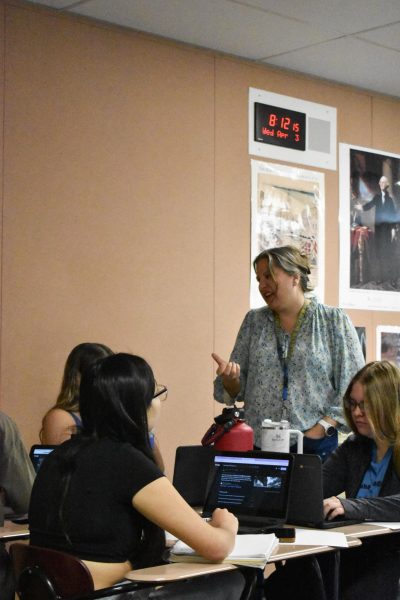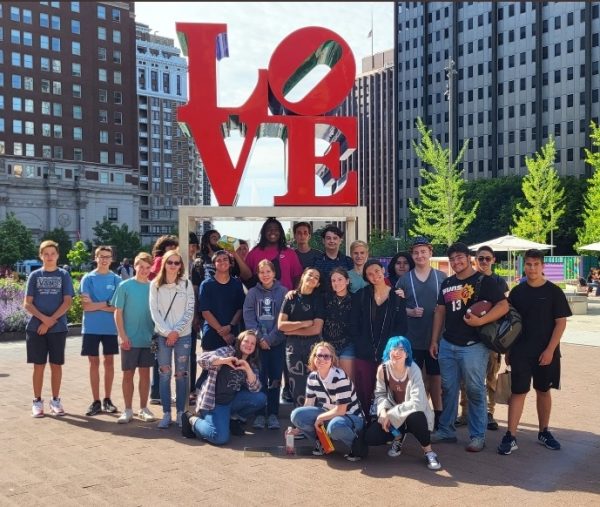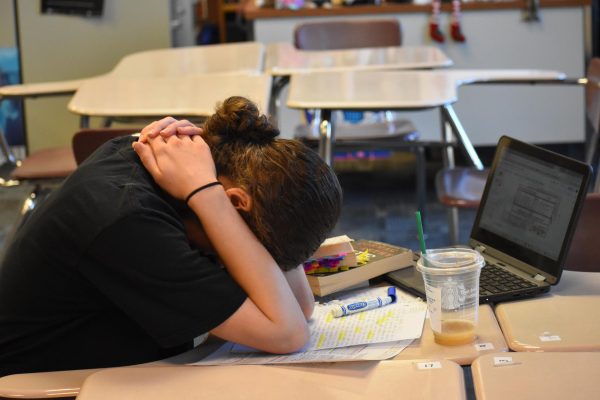Social Media: The good, the bad, the ugly
December 18, 2019
Within the last decade or so, there has been a huge leap within the technological industry. Smart phones have become the center of people’s lives, texting has expanded the horizons of communication, and the invention of certain social media platforms has affected society, as well.
Programs, such as Instagram, Snapchat, and Twitter, have become a large part of people’s daily lives. The length of which it has an effect on teenagers today can only be a prediction as to what impact it will have in the future.
“It’s a big influence. It shapes the way that we think. Because we think very differently from our parents today and especially for our kids. When our kids are teenagers, their motto is going to be a lot different from ours because it’s all about the progression of ideas nowadays,” said Andy Nguyen, junior.
One of the benefits of using social media is the ability to stay connected to people over a long distance. It allows people to stay in touch, and informs them of others’ whereabouts and daily lives.
“I personally like it a lot, because even though I’m not a big fan of using it, per se, because I just don’t like taking pictures and posting them for others to see. But on the flipside I like watching other people, see what they are doing with their lives, getting caught up with people I haven’t seen in a while,” Nguyen said.
From a productivity standpoint, social media can, in many ways, become a distraction. It diverts people’s attention away from the more tangible things in life, and towards the transient activities that pop up on a screen. From a teacher’s standpoint, it can clearly be seen how students are affected by it.
“In regards to students, I know it’s a huge distracter to their academic stuff. And I think it’s rewarded insubstantial things that don’t really mean much… but the reality is, that’s the virtual world and we live in the real world, so I think it’s giving us false impressions of people. Because it’s not who they are, it’s just what their image is versus what they do,” said Jim Burton, chemistry teacher.
A lot of the information social media provides is one sided and extremely opinionated. The entertainment factor people receive has also been geared towards their personal preferences.
“It’s a definite main news outlet where people get their own personalized outlet of what they get to see and what they’re exposed to. So sometimes that misconstrues a lot of the side of the stories. Because not everyone gets the full side, because usually what media nowadays does is they tailor what each person gets according to what they already watch, so a lot of the time it’s biased in what [people] get,” Nguyen said.
The material that people receive through these platforms is often by-product information that has been recycled and changed numerous times as it travels through a multitude of accounts. Due to this, a message can be modified in a way that causes a viewer to interpret it in a way which was not intended.
“Messages can get out there to be widespread. However, messages also have a higher chance of being misinterpreted, and then somebody spinning up that message and changing it into something else very quickly. Because even though it gets to more people, you don’t know who it’s getting to and those people aren’t always the nicest people and they can spin things, and change them and take things out of context and totally alter the message,” Burton said.
Every once in a while, the unpleasant side of social media tends to rear its ugly head. Although not talked about as much anymore, bullying over the internet still takes place. Kids can be mean and cruel when they don’t have to confront someone face to face. Instead they resort to the internet to solve their internal conflicts.
“My sister was bullied through texting and Instagram and Snapchat, and they photoshopped pictures of her. So yeah, I’ve definitely seen bad things happen but not everybody does that,” said Aksh Tanikella, senior.
Oftentimes, what is most alluring about social media is the capability it possesses to transport someone “out of this world”. People become so focused on themselves and their image that they forget to pay attention to the world around them.
“For some reason, I feel like it has become more important for them to put something out there on social media and get likes. It rewards …[attention seeking behavior] and brings attention to very small things which don’t really matter in the big scheme of things,” Burton said. “So I think, again, people start to get into this virtual world where they think those things are substantial, but they’re really not, and that it kind of becomes an escape for kids. And I call social media, and just technology sometimes, ‘the digital put your head in the sand’, because you can bury yourself in it and not pay attention to reality.”
In a way, social media can also be construed as having depleted people’s ability to obtain the highest quality of life possible. People are so focused on updating their profile, they forget to look up from the screen in their hands and experience life.
“People are just addicted to it. Like it’s the only thing that people do. They do things just to post things on Instagram or post it on their Snapchat story and not to actually enjoy it in the moment. Which I feel like it’s taking away a lot from what people could be experiencing because all they are doing is trying to get people to like what they are doing, but by doing that they are missing out,” Nguyen said.
Whether people like it or not, social media is a part of the impending future. It’s not entirely bad, but not completely good, either. It’s just a matter of how it’s being used.
“I think it’s a tool that we use that does have its positives and negatives, but you’ve got to be careful with it because it is a double-edged sword. Things can be taken the wrong way and it can be used in the wrong way very easily,” Burton said.













